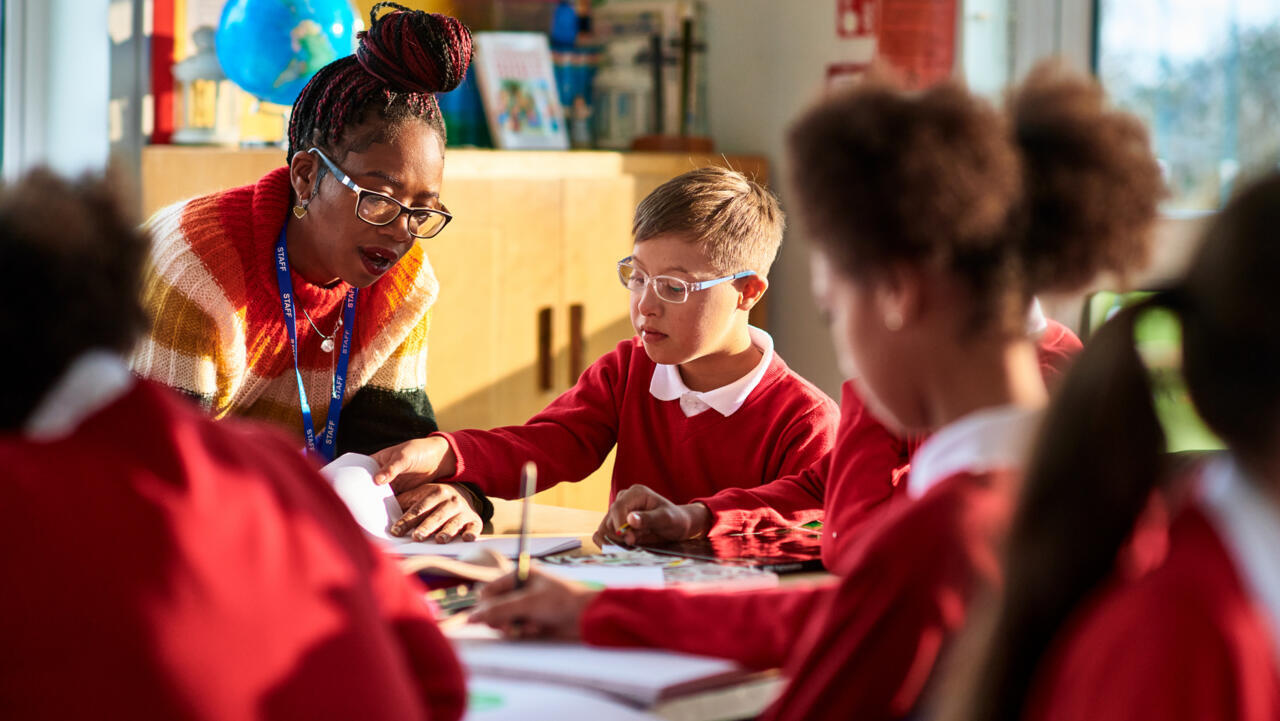The inclusive school means that more than 436,000 students with disabilities are welcomed in educational institutions. There are three times more of them than 20 years ago, but the system is not up to the task. Due to a lack of training and support, teachers say they are helpless and suffering in the face of already overcrowded classes. Meeting with teachers from a primary school in Seine-Saint-Denis in the Paris region. They are mobilizing to denounce the lack of support for students with disabilities (AESH). In addition to this particular problem, the inclusive school model lacks resources.
Depending on the severity of his or her disability, a child may be referred to a specialized institute, called a medical-educational institute (IME), or at school in a special class called ULIS, or even in a class “ordinary” with the help of a support person.
But in this primary school as elsewhere, the crowding has a cascading effect: children waiting for IME go to ULIS, and students who have no place in the systems designed for them are educated in mainstream classes, despite some times very serious disabilities.
Margaux, a teacher, thus welcomes a little girl in great difficulty into her CM2 class: ” I chased her around the school for half an hour when she ran away from my class. So I had to leave my class to my colleague because I couldn’t be in the oven and the mill. There are screams, tantrums, children are also hit in the classroom. I ran all over the school and it was hard to catch up with her. »
It is therefore impossible for Margaux to teach other students… Like her, Clémence has a passion for her subject and energy to spare. But today she feels helpless: ” This becomes very complicated because we will find ourselves with CM2 children who, for example, have worked with division or slightly more complex concepts next to non-reading children with whom we have to learn the alphabet, sounds, phonologyexplains the teacher. We will therefore end up with double, triple, quadruple level with no additional training to help them. »
Lack of AESH
On paper, a student with a disability should be supported by an AESH, a professional who helps them, but there is a serious lack of one. Sarah is the mother of Anna, who is on the autistic spectrum. In class, she is bothered by the noise. Her mother has fought for her to be accompanied until now: “ Currently she no longer has AESH, she is completely lost. Not to mention that his mistress is in “burnout”“, because the situation is very tense. She left after three weeks. At the moment there is a replacement and today he is absent. This is a truly dramatic situation. »
Émilie is a smiling and sweet young woman. Like all other AESH she is poorly regarded and underpaid. She takes care of the 12 children in the ULIS class in this primary school: ” Today, we have children who require a lot of attention, and they must be able to progress in their schooling. »
The teaching team does not reject the principle of inclusive schooling, but it regrets the lack of resources and training to implement this noble idea.
Also readIn France, there are more students with disabilities, but no better support
